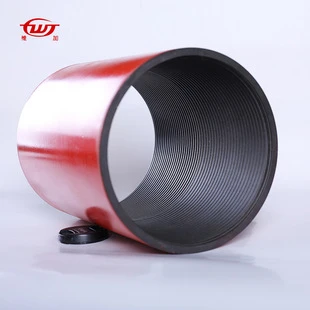- Afrikaans
- Albanian
- Amharic
- Arabic
- Armenian
- Azerbaijani
- Basque
- Belarusian
- Bengali
- Bosnian
- Bulgarian
- Catalan
- Cebuano
- Corsican
- Croatian
- Czech
- Danish
- Dutch
- English
- Esperanto
- Estonian
- Finnish
- French
- Frisian
- Galician
- Georgian
- German
- Greek
- Gujarati
- Haitian Creole
- hausa
- hawaiian
- Hebrew
- Hindi
- Miao
- Hungarian
- Icelandic
- igbo
- Indonesian
- irish
- Italian
- Japanese
- Javanese
- Kannada
- kazakh
- Khmer
- Rwandese
- Korean
- Kurdish
- Kyrgyz
- Lao
- Latin
- Latvian
- Lithuanian
- Luxembourgish
- Macedonian
- Malgashi
- Malay
- Malayalam
- Maltese
- Maori
- Marathi
- Mongolian
- Myanmar
- Nepali
- Norwegian
- Norwegian
- Occitan
- Pashto
- Persian
- Polish
- Portuguese
- Punjabi
- Romanian
- Russian
- Samoan
- Scottish Gaelic
- Serbian
- Sesotho
- Shona
- Sindhi
- Sinhala
- Slovak
- Slovenian
- Somali
- Spanish
- Sundanese
- Swahili
- Swedish
- Tagalog
- Tajik
- Tamil
- Tatar
- Telugu
- Thai
- Turkish
- Turkmen
- Ukrainian
- Urdu
- Uighur
- Uzbek
- Vietnamese
- Welsh
- Bantu
- Yiddish
- Yoruba
- Zulu
Exploring the Role of Casing Collars in Oil and Gas Operations
Understanding Casing Collars Their Importance in Oil and Gas Operations
Casing collars are essential components in the oil and gas industry, playing a vital role in the safe and efficient extraction of natural resources from beneath the Earth’s surface. As the demand for oil and gas continues to rise in today's energy-driven world, understanding the function and significance of casing collars becomes increasingly important for industry professionals and stakeholders.
At its core, a casing collar is a type of mechanical ring that is placed at strategic intervals within a wellbore during the drilling process. Casing, which is a series of steel pipes, is used to create a stable and secure environment within the hole drilled into the earth. This casing serves multiple purposes it protects the well from contaminants, prevents the collapse of the wellbore, and provides a conduit for oil and gas to be extracted. Casing collars are instrumental in connecting these sections of casing, providing structural integrity and facilitating the installation of various equipment necessary for the operational success of the drilling project.
One of the primary functions of casing collars is to support the casing strings. Casing collars ensure that the casing sections do not move independently, maintaining the overall stability of the well. This stability is paramount during drilling and production, as any movement could lead to dangerous situations such as blowouts or well failure. By securing the casing in place, casing collars contribute to the integrity of the entire well system.
Moreover, casing collars are equipped to accommodate various tools and equipment used throughout the drilling process, including packers and valves. These tools are often critical for controlling the flow of fluids and isolating sections of the wellbore. Casing collars provide a reliable attachment point, enabling the smooth operation and functionality of these systems. This versatility is particularly important in complex drilling scenarios, where multiple operations must occur simultaneously.
casing collar

In addition to their structural and functional roles, casing collars are designed to withstand high pressures and temperatures that are commonly encountered in deep-well drilling operations. The materials used in manufacturing these collars must be durable and resistant to corrosion, which is why stainless steel or other high-grade alloys are typically employed. This resistance ensures that casing collars can endure harsh downhole conditions, thus preventing failures that could result in significant operational setbacks and financial losses.
Furthermore, the installation of casing collars is a precise operation that requires skilled personnel and specialized equipment. The alignment of each collar must be carefully monitored to ensure that it fits seamlessly with the adjoining casing sections. Improper installation can lead to complications that might jeopardize the well’s integrity. Therefore, adherence to industry standards and rigorous quality control protocols is crucial throughout the installation process.
Finally, the selection of casing collar types and configurations can greatly influence the efficiency of the drilling operations. Different wells may require unique casing collar designs based on the geological conditions, depth, and specific operational needs. Consequently, engineers must perform detailed assessments to select the most appropriate casing collar for each project.
In conclusion, casing collars are a fundamental aspect of the oil and gas industry's infrastructure. Their roles in supporting casing strings, connecting equipment, and enduring harsh conditions cannot be understated. As drilling technology continues to evolve and the demand for oil and gas persists, the innovation and development of casing collar designs will play a crucial part in ensuring safe and efficient energy extraction for years to come. Understanding their importance offers invaluable insights for professionals working within this dynamic field.
-
Tubing Pup Joints: Essential Components for Oil and Gas OperationsNewsJul.10,2025
-
Pup Joints: Essential Components for Reliable Drilling OperationsNewsJul.10,2025
-
Pipe Couplings: Connecting Your World EfficientlyNewsJul.10,2025
-
Mastering Oilfield Operations with Quality Tubing and CasingNewsJul.10,2025
-
High-Quality Casing Couplings for Every NeedNewsJul.10,2025
-
Boost Your Drilling Efficiency with Premium Crossover Tools & Seating NipplesNewsJul.10,2025







